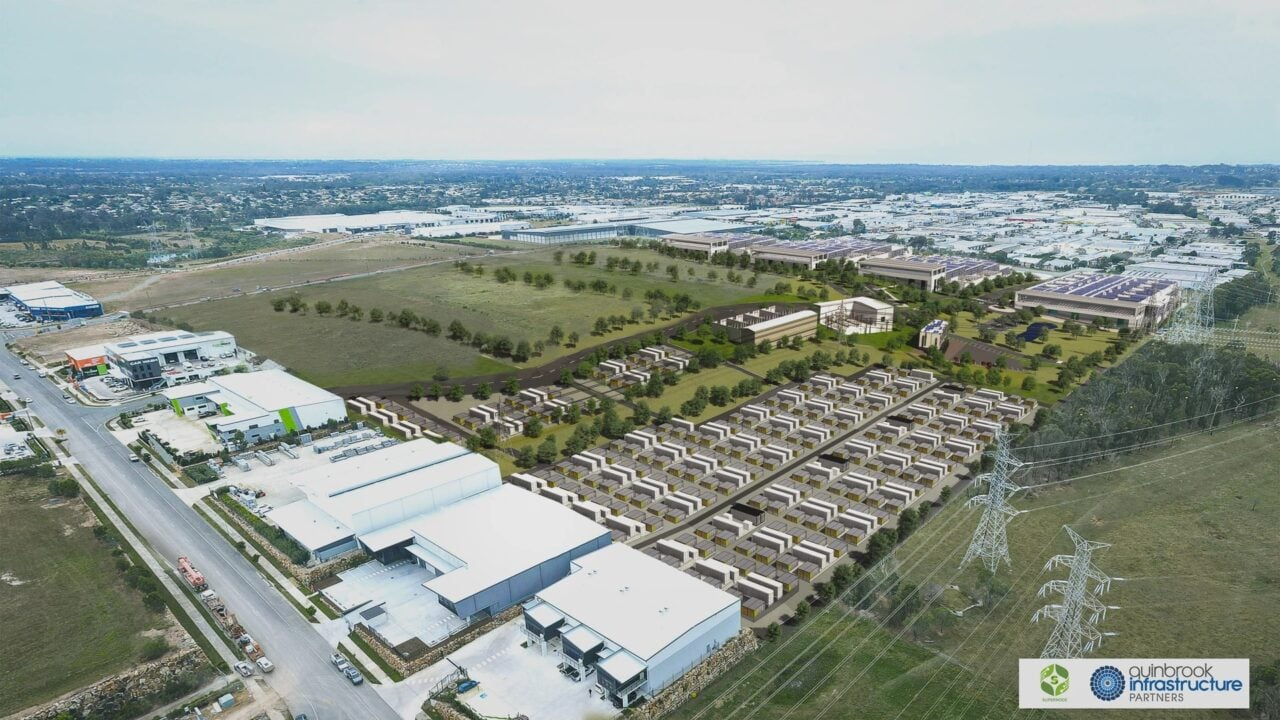The energy landscape in Australia is undergoing a profound transformation, and at the heart of this shift lies the burgeoning battery energy storage sector. Among the most ambitious projects to date is the 910MWh battery energy storage system (BESS) jointly developed by Quinbrook Infrastructure Partners and Akaysha Energy, which is now nearing commissioning in Queensland. This mammoth installation not only exemplifies the accelerating pace of renewable integration but also signals a strategic pivot in how Australia manages grid stability and energy security in the face of escalating demand and climate imperatives.
Queensland, long known for its reliance on coal-fired power, has been steadily embracing cleaner alternatives, driven by both policy reforms and market forces. The imminent operational status of this 910MWh BESS underscores a critical juncture where large-scale storage solutions transcend pilot phases to become foundational assets in the grid’s architecture. Quinbrook and Akaysha’s collaboration is emblematic of a broader global trend where private infrastructure investors and energy innovators converge to deploy utility-scale batteries capable of smoothing the intermittency of solar and wind power, thereby enhancing grid reliability.
Historically, Australia’s grid has grappled with volatility and supply constraints, especially as the share of renewables surged from a niche to a dominant source. The Australian Energy Market Operator (AEMO) has repeatedly emphasized the necessity of flexible resources that can absorb excess generation and dispatch power during peak periods. The 910MWh BESS project, located strategically in Queensland’s energy corridor, is poised to deliver precisely this kind of flexibility. By storing surplus renewable energy and releasing it on demand, it mitigates the risks of blackouts and price spikes, issues that have plagued the National Electricity Market (NEM) in recent years. For context, this scale of storage eclipses many existing facilities, marking a leap forward in capacity and operational sophistication.

The technological underpinnings of the project reflect a maturation of lithium-ion battery technology tailored for grid-scale applications. Akaysha Energy, known for its innovative approach to integrating storage with renewable generation, brings a nuanced understanding of system optimization, while Quinbrook’s infrastructure expertise ensures that the project navigates regulatory and financial complexities effectively. This synergy is particularly important given the evolving policy environment in Australia, where governments are grappling with balancing rapid decarbonization goals against energy affordability and reliability concerns. The project’s near commissioning phase suggests that these partnerships are increasingly adept at navigating such challenges.
Moreover, the implications of this project extend beyond Queensland’s borders. Australia’s clean energy transition is often cited as a bellwether for other regions with high renewable penetration, such as California or parts of Europe. The successful deployment of such a large-scale BESS will likely influence policy discourse and investment flows internationally. It also raises important questions about supply chains, raw material sourcing, and the environmental footprint of battery manufacturing—issues that have sparked debate in academic circles and industry forums alike. For example, recent studies published in Joule highlight the need for sustainable and ethical sourcing of lithium and cobalt, a consideration that developers like Quinbrook and Akaysha must integrate into their long-term strategies.
From a societal perspective, energy storage projects of this magnitude can catalyze local economic development through job creation and infrastructure investment. Yet, they also invite scrutiny regarding land use, community engagement, and the equitable distribution of benefits. Queensland has seen its share of public debates around renewable projects, and transparent communication remains crucial.

Looking ahead, the commissioning of the Quinbrook-Akaysha BESS could be a harbinger for a new era where energy storage is not merely an ancillary technology but a central pillar of energy systems. As governments worldwide commit to net-zero targets, the role of large-scale batteries in balancing grids, enabling renewable penetration, and facilitating sector coupling will only intensify. However, this evolution is not without challenges. Regulatory frameworks must keep pace to incentivize storage investment without distorting markets, and technological innovation must continue to improve battery longevity, safety, and recyclability.
In this complex tapestry, the Queensland project stands as a testament to what can be achieved when vision, capital, and technology converge. It invites reflection on the broader trajectory of energy transition—how societies can reconcile immediate energy needs with long-term sustainability goals. As the 910MWh BESS edges closer to operational status, it offers a tangible glimpse into a future where clean, reliable, and flexible energy is not a distant aspiration but an unfolding reality.
In sum, the nearing commissioning of this battery energy storage system in Queensland is more than a technical milestone; it is a narrative about resilience, innovation, and the ongoing quest to redefine how we power our lives amid a changing climate and evolving societal expectations. The road ahead may be complex, but projects like this illuminate the possibilities that emerge when ambition meets execution.
Yet, as the Queensland BESS project approaches its commissioning, it also highlights the intricate interplay between local context and global imperatives. Queensland’s abundant sunshine and growing renewable capacity make it a natural candidate for such a large-scale battery installation, but the project’s success hinges not only on technical prowess but also on community acceptance and grid integration strategies. The region’s energy landscape is rapidly transforming, with distributed solar generation placing new demands on the grid, while energy consumption patterns evolve alongside electrification trends in transport and industry. This BESS, therefore, is not just a static infrastructure piece but a dynamic participant in a broader energy ecosystem, managing fluctuations, providing ancillary services, and potentially deferring costly network upgrades. Its operational strategies will likely evolve as it interacts with other grid assets and market mechanisms, reflecting a move toward more decentralized, responsive grid architectures.
This project also invites us to ponder the socio-economic ripple effects of such investments. Beyond stabilizing the grid and enabling renewables, large storage projects can catalyze local job creation, skills development, and economic diversification, especially in regions historically reliant on fossil fuel industries. Quinbrook and Akaysha Energy’s collaboration embodies a model where private capital and technological innovation align with public policy goals, but it also raises questions about equitable access to the benefits of the energy transition. Who ultimately reaps the rewards of cleaner, more reliable energy? How are communities engaged in the decision-making processes that shape their energy futures? These questions underscore the importance of transparent governance and inclusive planning in ensuring that energy storage projects contribute to broader social and environmental justice.
Looking ahead, the commissioning of this 910MWh BESS could serve as a critical learning platform for future projects not only in Australia but globally. As battery technologies diversify—with emerging chemistries promising higher energy densities and longer lifespans—the operational data and user experiences from Queensland will be invaluable. Moreover, as grid codes adapt to accommodate such massive storage assets, regulators and system operators will glean insights into optimizing market designs and grid services procurement. The project’s integration with Queensland’s ambitious renewable targets could also offer a blueprint for how large-scale storage can be harmonized with variable generation to maintain system reliability without resorting to carbon-intensive backstops.

In the grand scheme, the Queensland BESS stands at the nexus of technological innovation, policy evolution, and societal transformation. It embodies the promise—and the complexity—of a future where energy is not merely consumed but actively managed, stored, and dispatched in ways that align with environmental stewardship and economic vitality. As the world grapples with the urgency of climate action, projects like this remind us that the path forward is neither simple nor linear but is forged through persistent experimentation, collaboration, and adaptation. The journey of this battery system from conception through commissioning and beyond will undoubtedly contribute rich chapters to the unfolding story of the global energy transition.
Yet, the story of the Queensland BESS does not conclude at its commissioning. Instead, it marks the beginning of an intricate dance between technology and the lived realities of a power grid in transition. As the system comes online, operators will face the challenge of integrating this vast reservoir of stored energy into a grid that still wrestles with the intermittency of renewables and the legacy of fossil-fueled infrastructure. The agility of the battery system to respond in real time to fluctuations—whether smoothing dips in solar generation on cloudy days or absorbing excess wind power during gusty nights—will be closely monitored, providing a living laboratory for grid management strategies globally. This dynamic interplay raises questions about the evolving role of human oversight versus automated control in energy dispatch, a frontier where artificial intelligence and machine learning promise to refine operational efficiency but also introduce new complexities around cybersecurity and system resilience.
Moreover, the social and economic dimensions of such large-scale deployments cannot be overlooked. Communities near the installation site may experience a shift in local economies, with potential job creation during the operational phase and the opportunity for ancillary services that enhance grid stability. However, the long-term environmental footprint, including considerations around battery recycling and the sourcing of critical minerals, will demand vigilant stewardship. The project thus sits at the intersection of innovation and responsibility, highlighting the need for transparent stakeholder engagement and policies that prioritize sustainable practices throughout the battery lifecycle.
Looking ahead, the implications of the Queensland project ripple far beyond Australia’s borders. As nations worldwide race to decarbonize, the lessons gleaned here will inform not only the technical specifications of future storage systems but also the regulatory frameworks that govern energy markets. The capacity to store 910 MWh of energy challenges conventional paradigms, pushing policymakers to rethink tariffs, incentives, and grid access rules to foster investment while safeguarding public interests. The project’s success or shortcomings will inevitably influence international discourse on energy storage standards and best practices, underscoring the interconnectedness of energy transitions in a globalized era.

In essence, the commissioning of the Quinbrook and Akaysha Energy battery system is more than a technical milestone; it is a crucible where innovation meets real-world complexity. The unfolding narrative will be shaped by a confluence of technological evolution, regulatory agility, and societal acceptance. As researchers, policymakers, and communities watch closely, the Queensland BESS stands as a testament to the arduous yet hopeful journey toward a cleaner, more resilient energy future—one charge and discharge cycle at a time.
Yet, as the Queensland BESS edges closer to full commissioning, it also invites a broader reflection on the evolving role of such large-scale storage projects within the tapestry of Australia’s energy grid. The nation’s grid, historically reliant on coal and gas, has been undergoing a profound transformation, with renewable energy sources like solar and wind now dominating new capacity additions. However, the intermittent nature of these renewables has long posed challenges for grid stability and reliability. The 910 MWh capacity offered by the Quinbrook and Akaysha Energy project is a direct response to these challenges, providing a buffer that can absorb excess generation during peak production and release it during demand surges or lulls in renewable output. This dynamic not only smooths out fluctuations but also reduces the reliance on fossil fuel-powered peaker plants, which are often the most carbon-intensive and costly components of the energy system.
Moreover, the project’s scale and ambition reflect a growing confidence in battery storage technology, which has seen dramatic cost reductions and efficiency improvements over the past decade. The decision by Quinbrook and Akaysha to deploy such a vast system signals a maturation of the market and a recognition that energy storage is no longer an ancillary component but a central pillar of grid architecture. This shift is echoed globally, with countries like Germany, the United States, and China also ramping up investments in battery storage to complement their renewable portfolios. Yet, the Queensland project stands out not only for its size but for its strategic integration into the local grid, designed to maximize both economic returns and environmental benefits.
However, the path forward is not without its complexities. Questions remain about the long-term sustainability of battery materials, particularly given the environmental and social concerns tied to lithium and cobalt mining. The Queensland project has made strides in this area by engaging with suppliers committed to ethical sourcing and by exploring recycling pathways to extend the life cycle of battery components. Still, the industry as a whole must grapple with these issues to ensure that the transition to clean energy does not come at an unacceptable cost to communities or ecosystems. Additionally, the integration of such large storage facilities requires sophisticated grid management and forecasting tools to optimize performance and prevent unintended consequences such as congestion or over-reliance on storage capacity.
Looking further ahead, the success of the Queensland BESS could catalyze a wave of similar projects across Australia and beyond, embedding energy storage as a standard feature of modern grids. This could, in turn, accelerate the retirement of aging fossil fuel plants and hasten the decarbonization trajectory, aligning with Australia’s commitments under international climate agreements. Yet, this transition will demand not only technological innovation but also adaptive policy frameworks that balance market incentives with public accountability. As energy markets evolve, ensuring equitable access and preventing monopolistic control over storage assets will be critical to maintaining consumer trust and fostering widespread adoption.
In sum, the commissioning of the Quinbrook and Akaysha Energy battery system is a microcosm of the broader energy transition—a complex interplay of technology, policy, economics, and social values. Its unfolding story will offer invaluable insights into how large-scale energy storage can be harnessed to build a resilient, sustainable, and equitable energy future. For observers and participants alike, the coming months represent a pivotal chapter in the ongoing quest to reshape how we generate, store, and consume energy in an era defined by urgent climate imperatives and rapid innovation.
Yet, as the Queensland project approaches its commissioning phase, it also highlights the intricate challenges that accompany the deployment of such massive storage facilities. The sheer scale of a 910MWh battery installation demands not only robust engineering but also a nuanced understanding of grid dynamics and consumer behavior. For instance, integrating such a facility seamlessly into Queensland’s existing grid infrastructure requires precise coordination with the Australian Energy Market Operator (AEMO), whose role in managing grid stability and dispatch is becoming increasingly complex amid rising renewable penetration. Moreover, community engagement remains a critical, though often underappreciated, aspect of these projects. Local stakeholders must be assured that the environmental footprint of these batteries is minimized and that the long-term benefits—both economic and environmental—are equitably shared.
The environmental considerations extend beyond just emissions reductions. The lifecycle impacts of battery production, including sourcing of critical minerals like lithium and cobalt, have sparked contentious debates globally. Australia, with its rich mineral reserves, finds itself at a crossroads: it can lead ethically responsible mining and battery manufacturing practices or risk perpetuating supply chain vulnerabilities and social injustices overseas. This duality adds a layer of complexity to projects like Quinbrook and Akaysha Energy’s BESS, whose success will partly hinge on transparent supply chain management and adherence to evolving environmental standards.
Looking beyond Australia’s borders, the Queensland BESS serves as a bellwether for other regions grappling with similar energy challenges. Europe and North America have been rapidly scaling battery storage, but the vastness and climatic diversity of Australia’s landscape offer unique test cases for operational resilience and grid integration strategies. The lessons learned here could inform best practices worldwide, particularly in balancing intermittent renewable generation with reliable storage solutions. Furthermore, as hydrogen and other emerging storage technologies gain traction, projects like this will provide important comparative data on cost, scalability, and environmental impact.
As the world watches the Queensland facility come online, it also underscores the urgency of policy innovation. Regulatory frameworks must evolve in tandem with technology, fostering not just investment but also innovation in business models, such as virtual power plants and peer-to-peer energy trading. The traditional utility model is being challenged, and how regulators respond could either accelerate or stifle the integration of storage assets. For communities, this means not only cleaner energy but potentially new forms of energy democracy, where consumers become active participants rather than passive recipients.
In essence, the journey of the Quinbrook and Akaysha Energy BESS is emblematic of a broader transformation—a shift from centralized, fossil-fuel-based power systems to decentralized, renewable-driven networks empowered by storage. It is a narrative rich with promise but fraught with complexity, demanding vigilance, adaptability, and a willingness to rethink entrenched paradigms. As commissioning nears, stakeholders across the spectrum—from policymakers and engineers to local residents and environmental advocates—will be watching keenly, knowing that the outcomes here could ripple far beyond Queensland’s borders, shaping the future contours of the global energy landscape.




